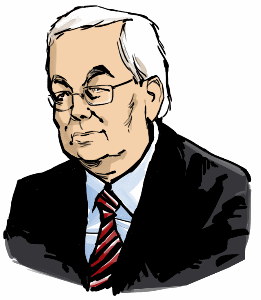© Gunnar Tómasson
14 November 2015
The Ancient Mystical Order Rosae Crucis
(https://www.rosicrucian.org/history)
The Rosicrucian Order, AMORC is known internationally by its traditional and authentic title, the Ancient Mystical Order Rosae Crucis, from which is derived the acronym “AMORC.” The Ancient Mystical Order Rosae Crucis is the Latin form of the organization’s name, which literally translates into the Ancient Mystical Order of the Rose Cross. There is no religious connotation associated with this symbol; the Rose Cross symbol predates Christianity. The cross symbolically represents the human body and the rose represents the individual’s unfolding consciousness.
[…]
As the Renaissance burst upon Europe with a flash of new interest in the arts and sciences, a mysterious publication printed in 17th-century Germany and called the Fama Fraternitatis heralded a renewed interest in Rosicrucianism throughout Europe. The Fama introduces Christian Rosenkreuz, a mythical character who was said to have traveled to centers of learning in the Near East and who personified the revived interest in esoteric studies and mystical learning.
As part of this great renewal, the renowned Sir Francis Bacon (1561-1626), English philosopher, essayist, and statesman, directed the Rosicrucian Order and its activities both in England and on the continent.
Foreword
Below is a bird’s-eye view of the Ancient Pagan roots of Augustan-Saga-Shakespeare Myth and Literature and their fusion with Christian imagery through the Sacred Triangle of Pagan Iceland.
This concept is not addressed in the present note, but it refers to a Pythagorean Triangle which marks the setting of Saga of Burn’t Njáll within a larger circular frame. According to Icelandic Saga scholar Einar Pálsson, the frame represented a projection on the earth below of the Zodiac above.
Snorri Sturluson (1179-1241) gave this Pagan/Christian imagery literary form in the 13th century which served Francis Bacon as foundation for the imagery of The Ancient Mystical Order Rosae Crucis.
Snorri Sturluson and Francis Bacon gave essential unity to Augustan-Saga-Shakespeare Myth and Literature of the kind envisaged by Plato in ION where he likened a succession of inspired poets – Brotherhood – to magnetic rings which cling together in a chain originating from ONE magnet.
Comments are kept to a minimum. However, in Item VI Mozart’s Magic flute is noted. The opera is said to reflect Masonic myth but it mirrors aspects of Ancient Creation Myth, whose themes are reflected in Augustan-Saga-Shakespeare Literature.
The same is true of Verdi’s Aida, as suggested by the mention of Ritorna Vincitur – Return Victorious – in Item VII. A First folio poem on William Shakespeare speaks of his “death” as “but an exit of mortalitie” and prelude to “a Re-entrance to a Plaudite”.
Likewise, in Uppsala Edda a listing of “law-speakers” in Iceland ends on: “Snorri Sturluson í annat sinn,” or “a second time”, as in The Second Coming.
***
I. The great order of the ages is born afresh
Virgil’s Christ Prophecy
20087 = Magnus ab integro saeclorum nascitur ordo.
1 = Monad
7725 = Metamorphosis
4000 = Flaming Sword
31813
II. Mission of Hebrew Man of Seventh Day
Restoring Unity to JHWH’s “wounded name”
1 = Monad
10467 = Osiris-Isis-Horus
10773 = Spiritus Sanctus
7 = Man of Seventh Day
10565 = JHWH – 10-5-6-5 in Hebrew gematria
31813
III. Snorri Sturluson and Fama Fraternitatis
or Report of the Brotherhood
1 = Monad
8358 = Fama Fraternitatis
-1000 = Darkness
4000 = Flaming Sword
11359 = Snorri Sturluson
IV. Snorri and the Brotherhood’s Mission
After „exit of [Snorri’s] moralitie“
20087 = Magnus ab integro saeclorum nascitur ordo.
11359 = Snorri Sturluson
7 = Man of Seventh Day
360 = Devil’s Circle
31813
401006 = Devil‘s Circle‘s Alpha – Snorri‘s ‟Murder most foule“¹
432819
V. The Great Instauration
Sir Francis Bacon‘s Plan for Humanity
31813 = The Brotherhood‘s Mission
11683 = De Augmentis Scientiarum – Partitions of the Sciences
7608 = Novum Organum – New Method
9832 = Historia Naturalis – Natural History
8593 = Scala Intellectus – Ladder of the Intellect
16699 = Anticipationes Philosophiæ Secunda – Anticipations of the 2nd Philosophy
18203 = Philosophia Secunda aut Scientia Activæ – The Second Philosophy or Active Science
104431
VI. Gylfaginning and Kali Yuga
Mozart – The Magic Flute
4819 = Gylfaginning
-4000 = Dark Sword – Cosmic Creative Power ‟Asleep‟
432000 = Kali Yuga
432819
VII. Bók þessi heitir Edda²
Verdi – Aida – Ritorna Vincitur
8542 = Bók þessi heitir Edda.
20156 = Hana hevir saman setta Snorri Sturlo son
15735 = eptir þeim hætti, sem hér er skipat.
10539 = Er fyrst frá ásum ok Ymi
18224 = þar næst skalldskap ok heiti margra hluta.
17723 = Síþaz Hatta tal er Snorri hevir ort
13512 = um Hak Konung ok Skula hertug.
104431
¹ Íslendinga saga (Saga of Icelanders), Ch. 151.
29224 = Gizurr kom í Reykjaholt um nóttina eftir Mauritíusmessu.
20587 = Brutu þeir upp skemmuna, er Snorri svaf í.
32733 = En hann hljóp upp ok ór skemmunni í in litlu húsin, er váru við skemmuna.
19023 = Fann hann þar Arnbjörn prest ok talaði við hann.
35331 = Réðu þeir þat, at Snorri gekk í kjallarann, er var undir loftinu þar í húsunum.
21242 = Þeir Gizurr fóru at leita Snorra um húsin.
28547 = Þá fann Gizurr Arnbjörn prest ok spurði, hvar Snorri væri.
8875 = Hann kvaðst eigi vita.
22694 = Gizurr kvað þá eigi sættast mega, ef þeir fyndist eigi.
28330 = Prestr kvað vera mega, at hann fyndist, ef honum væri griðum heitit.
22884 = Eftir þat urðu þeir varir við, hvar Snorri var.
25600 = Ok gengu þeir í kjallarann Markús Marðarson, Símon knútr,
26492 = Árni beiskr, Þorsteinn Guðinason, Þórarinn Ásgrímsson.
13048 = Símon knútr bað Árna höggva hann.
12169 = „Eigi skal höggva,” sagði Snorri.
8594 = „Högg þú,” sagði Símon.
12169 = „Eigi skal höggva,” sagði Snorri.
33464 = Eftir þat veitti Árni honum banasár, ok báðir þeir Þorsteinn unnu á honum.
401006
Loose translation: Gizurr came to Reykjaholt the night after Mauritius Mass. They broke open the storehouse where Snorri slept. But he jumped up and out of the storehouse to the small houses next to the storehouse. There he found Arnbjörn priest and talked to him. They agreed that Snorri should go into the cellar which was under the ceiling in the houses. Gizurr and his men began searching for Snorri around the houses. Gizurr then found Arnbjörn priest and asked where Snorri was. He said he knew not. Gizurr said that they could not be reconciled if they did not meet. The priest said that perhaps he might be found if he was promised that his life would be spared. Thereafter they became aware of where Snorri was. And they walked into the cellar, Markús Marðarson, Símon knútr, Árni beiskr, Þorsteinn Guðinason, Þórarinn Ásgrímsson. Símon knútr asked Árni to strike him. “Do not strike,” said Snorri. “Thou shalt strike,” said Símon. “Do not strike,” said Snorri. After that Árni inflicted a mortal wound on him, and he and Þorsteinn finished him off.
² This book is named Edda. It has been put together by Snorri Sturluson in the manner directed by him. First are tales of Aesir and Ymr, next poetry and names of many things. Last Snorri’s poetry of different metric forms about King Hakon and Duke Skuli.
***
Calculator for converting letters to cipher values is at:
http://www.light-of-truth.com/ciphersaga.htm

 Gunnar Tómasson
Gunnar Tómasson